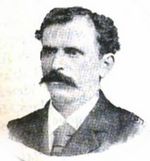Signatories of the Banco de Tabasco
Interventor
|
[if same person(s)] A Luis Dorbecker was Secretario-Tesorero of the Negociación Minera “Asturiana y Anexas” de Zacatecas S.A. in November 1900El Contemporaneo, San Luis Potosí, 2 December 1900. Dorbecker took up his post on 3 January 1901informe of interventor Luis Dorbecker, 5 July 1901, in Memorias de las Instituciones de Crédito correspondientes á los años 1900-1902, vol. I. He signed notes from 1901 to 1903 and balance sheets until January 1906. By 27 March 1906 there was no longer an Interventor in post and Luis G. Sosa, the Jefe de Hacienda, took over the roleSHCP, Memoria de las Instituciones de Crédito correspondiente al año 1907. In January 1906 Luis Dorbecker was company secretary of the Tabacalera Tabasqueña, S. A.Periódico Oficial, Tomo XXVIII, Núm. 12, 10 February 1906. A Luis Dorbecker was Administrador Principal del Timbre in Túxpan, Veracruz, in June 1906 and held the same post in Monterrey, Nuevo León in July 1913Periódico Oficial, 11 July 1913. A Luis Dorbecker was appointed interim Secretario and Director Gerente of the Cervecería La Parla, S.A. in Guadalajara, Jalisco on 28 Abril 1920El Informador, 7 May 1920. |
 |
Gerente
|
Rodríguez, the Director Gerente on the 1901 issues, appears on some 1903 notes as a Consejero as he later joined the board. |
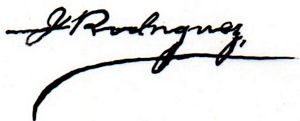 |
|
Teodoro Abaunza was born in 1865. He was elected the first secretary of the Circulo Mercantil de Tabasco on its formation on 2 March 1890Periódico Oficial, Tomo VII, Núm. 335, 29 March 1890. He was appointed Cajero of the new bank in December 1900El Imparcial, 3 December 1900 and took over as Gerente on [ ]. He signed the $5 and $10 notes that were dated 19 September 1903. He resigned in November 1913 and was replaced by Santiago MotaPeriódico Oficial, Tomo XXXV, Núm. 3, 10 January 1914. On 15 September 1903 Abaunza was elected a comisario of the newly formed Ferrocarril Central Tabasqueño, S. A., which proposed to construct a railway from San Juan Bautista to Cunduacán and the Rió SecoThe Mexican Herald, 30 October 1903. |
 |
Consejero
|
José Antonio Búlnes Villanueva Búlnes was gerente of Búlnes y Compañía, the largest lumber company in Tabasco, extracting mahogany, cedar and dye wood (palo de tinte). |
 |
|
On 15 September 1903 José González Lamadrid was elected a vocal of the newly formed Ferrocarril Central Tabasqueño, S. A., which proposed to construct a railway from San Juan Bautista to Cunduacán and the Rió SecoThe Mexican Herald, 30 October 1903. He was owner of “La Industrial” chocolate factoryEco de Tabasco, 17 February 1909. |
 |
|
Miguel Ripoll Deyá was born in Sóller, Majorca, Spain in 1872. He moved to Mexico between 1889 and 1899 and entered business, as a member of the casa Ripoll y Compañía. The casa comercial of M. Ripoll y Cía was on the corner of Constitución and 1ra de Grivalja. |
 |
|
Manuel Romano was one of two brothers, Román and Manuel, who came from Llanes, Oviedo, Spain and who ran the Casa Romano, one of the oldest and strongest companies in Tabasco. They had interests in river and maritime transport, with branches at Frontera, Laguna de Términos and VeracruzIn 1886, Casa Romano had four steamers, Fénix, Victoria, Ibero and Tabasco. In 1899, It managed, together with the Casa Berreteaga, a shipping company that already had seven ships, Yucatan,Tehuantepec, Mexico, José Romano, Campeche, Tabasqueño and Veracruz. In 1902, the Romanos were the most important partners in the Compañía Mexicana de Navegación, S.A.., with its main headquarters in Veracruz and thirteen steamers in operationEl Progreso, San Juan Bautista, 3 December 1905. They also exploited the mahogany and palo de tinte and once the mahogany reserves in the southeast of the state were depleted, moved their operations to the banks of the Chacamax River, where they established a large estate, called La Reforma. The Casa Romano was restructured from 6 February 1889, and thereafter called Romano y Cía., Sucesores. |
 |
|
Rafael Sevilla was gerente of G. Benito y Compañía, Sucesores. On 15 September 1903 Rafael Sevilla was elected a director (vocal) of the newly formed Ferrocarril Central Tabasqueño, S. A., which proposed to construct a railway from San Juan Bautista to Cunduacan and the Rió SecoThe Mexican Herald, 30 October 1903. |
 |
|
José García Trueba's estalishment was on the corner of Juárez and Reforma. By 1840 San Juan Bautista did not have a pier and boats docked in ravines. Governor Simón Sarlat Nova tried to build a pier but encountered difficulties over access right but the state government entered into a contract for a dock with the Ministry of Public Works on 12 December 1888, and it was approved on 22 May 1890. In July 1894 Manuel Jamet and José García Trueba formed the company "Jamet y Trueba" for the construction and operation of the fiscal dock. The state government transferred their rights on 27 February 1895, the company was dissolved and José G. Trueba was left to build the dock, in front of Casa Pizá y Compañía. The pier was of small proportions, with iron piles driven into the ravine and smeared pine planks. |
 |
|
He was interim governor of Tabasco on two occasions (12 March – 5 April 1886, 21 – 23 March 1887) and elected Constitutional Governor in December 1910 for the period 1911 – 1914, though he renounced the office on 9 June 1911 after only six months, because of pressure from the revolutionaries. He died in San Juan Bautista, Tabasco on 4 January 1914. |
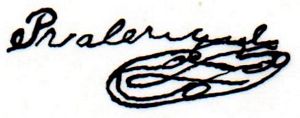 |
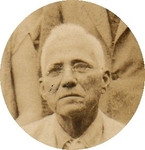 Nicolás P. Valenzuela was the son of Policarpo Valenzuela. Nicolás P. Valenzuela was the son of Policarpo Valenzuela. |
 |
|
Francisco Rodríguez see supra. |
 |
|
Bartolomé Estades On 15 September 1903 Bartolome Estades was elected a vocal of the newly formed Ferrocarril Central Tabasqueño, S. A., which proposed to construct a railway from San Juan Bautista to Cunduacan and the Rió SecoThe Mexican Herald, 30 October 1903. In March 1906 he was a vocal suplente for the “La Industrial” factoryPeriódico Oficial, Tomo XXVIII, Núm. 21, 14 March 1906. He signed some higher numbered $5 and $10 notes dated 19 September 1903. |
 |
|
Juan Ripoll Deyá was Miguel's brother and born in Sóller, Majorca, Spain in 1873. He signed some higher numbered $5 and $10 notes dated 19 September 1903. He was president of the board in 1913Periódico Oficial, Tomo XXXV, Núm. 3, 10 January 1914. |
 |
|
By the mid 1880s he had a business in San Juan Bautista and on 12 December 1886 brought in his younger brother, Juan, to form a new company called Suárez G. HermanosPeriódico Oficial, 22 December 1886. By 1930 he was living in Mérida, Yucatán, where he died on 7 September 1933, at the age of 84. He signed some higher numbered $10 notes dated 19 September 1903. |
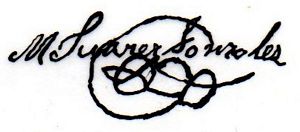 |

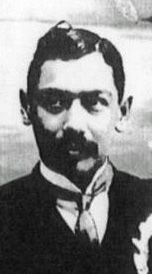 Luis Dorbecker Mancilla was born in Tampico, Tamaulipas on 21 June 1873.
Luis Dorbecker Mancilla was born in Tampico, Tamaulipas on 21 June 1873.
